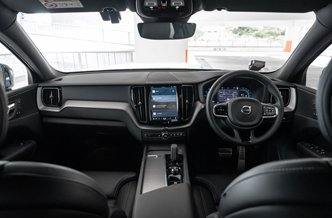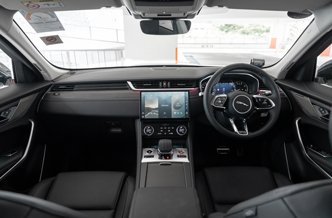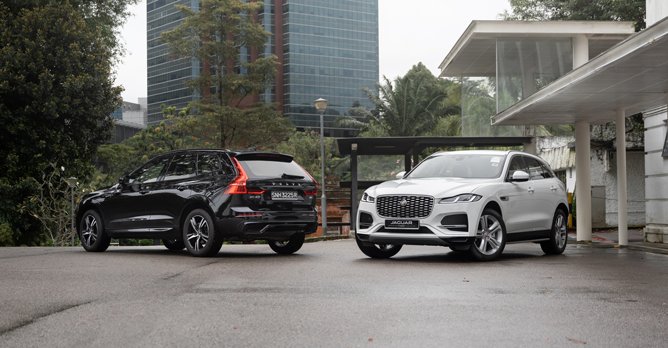Volvo XC60 Mild Hybrid B5 R-Design 2.0 (A) vs Jaguar F-PACE 2.0 SE (A)
29 Oct 2022|9,720 views
Volvo XC60 B5
Better ergonomics
More spacious backseat
Sprightlier off-the-line acceleration
Comfier seats
Jaguar F-PACE SE
More stylish interior
Smoother and more refined engine
Cushier ride quality
Cooler infotainment
Pitting the Volvo XC60 B5 against the Jaguar F-PACE SE is a very interesting experience, for these two models are diametrically opposed.
From their designs to their interiors to the way they drive, both models are the exact opposite of the other. The only thing they have in common is that they are premium mid-size SUVs.
Will Volvo's Scandinavian approach be the way to go? Or will Jaguar's British character prove to be even more enticing? Keep reading to find out!
Aesthetic contrasts
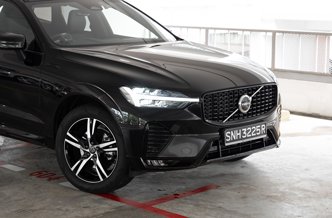 | 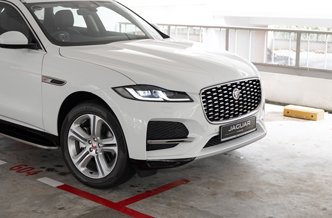 |
The F-PACE, on the other hand, gives off a swankier vibe with its slimmer head lights and taillights, narrower greenhouse and more steeply raked rear windscreen. Its L-shaped daytime running lights are a nice touch.
I also prefer the F-PACE's sloping roofline to the more upright roofline of the XC60. However, the lighter coloured paint on the F-PACE doesn't do it justice. In a darker hue such as Portofino Blue, the F-PACE's lines are more obvious.
Between the two, the XC60 is more attractive because it looks good from almost every angle. The F-PACE, on the other hand, is more appealing when viewed from its sides and rear three-quarter angles.
Inside stories
The XC60 and F-PACE also have different design philosophies when it comes to their interiors.
If it's user-friendliness you seek, then the XC60 is for you. Compared to pre-facelift model, the current one has a much simpler Android-powered infotainment system.
Said system is intuitive, with fewer menus to navigate and lesser options to tweak, so even first-time owners won't get lost here. Plus, the instrument panel now only has two main layouts: one with the map in the middle and another without.
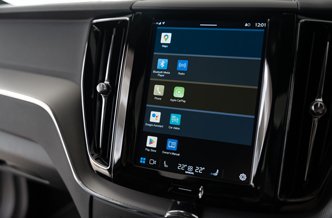 |  |
The XC60 also has the edge in driver comfort, for its cockpit is roomier, while the supportive seats need little adjusting for you to find an ideal position.
The F-PACE, on the other hand, offers a more stylish space. Buyers can opt to have the dashboard and door panels trimmed with wood veneer, the gearshift lever's stitching is inspired by that of a cricket ball, and there's a selection of colours for the accent and background mood lighting.
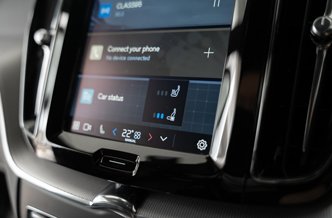 | 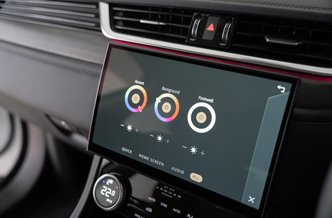 |
I also prefer the F-PACE's air-con controls, with the dual-function knobs looking and feeling expensive. The same is true for the drive mode selector dial, which lets you push it down to 'lock' it and prevent accidental switching.
Practical matters
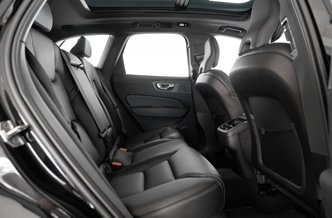 | 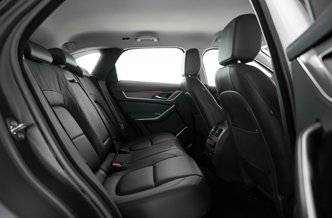 |
The Volvo's bench is more comfortable than the F-PACE's, too. In addition, rear seat occupants also get two more climate zones, whereas in the F-PACE, it's just the standard pair of air vents.
Now, despite the F-PACE being the larger SUV and having a longer wheelbase (2,874mm vs 2,865mm), there's less space all around. The rear bench in particular, is more suitable for two instead of three, as the floor protrusion makes things more awkward for the middle occupant. The sloping roofline also reduces the available headroom. Sporty styling has its price.
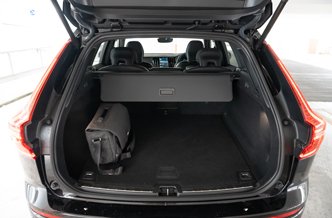 | 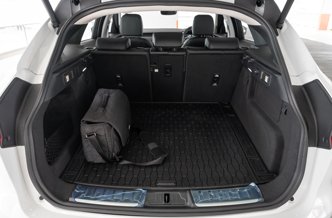 |
The F-PACE is even more useful when you need to haul groceries, sports equipment such as tennis racquets, or move house. Its 793-litre boot can take lots of bulky items, while the 40:20:40 split-folding rear seats enhances its flexibility.
Most folks will find the XC60's 483-litre boot to be more than adequate, though. With its rectangular space and 60:40 split-folding rear bench, you can still stow a full-size bicycle in here without any issues.
In addition, the relatively low loading height makes it easier for petite users to load/unload bulky items as well.
Driver appeal
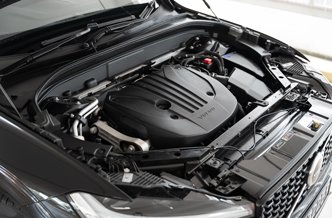 | 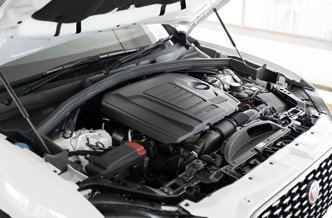 |
But it's the XC60's powerplant that is more advanced, thanks to the 48-volt mild hybrid system. Because of this, the stop-start function here is much smoother than in the F-PACE.
The mild hybrid system also helps the XC60 average up to 14.5km/L, which is better than the F-PACE's stated average of 12.8km/L.
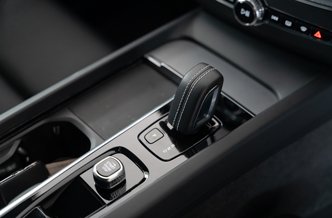 | 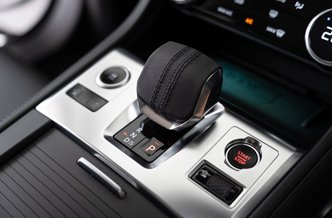 |
Nail the accelerator pedal from a standstill and the XC60's front tyres will even chirp and squeal in protest as they attempt to deal with the torque suddenly being fed to the front axle.
But press on and you'll find that the XC60 is less willing to be driven hard. It may feel solid and tank-like on the go, but its motor could use more refinement.
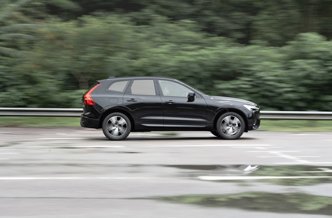 | 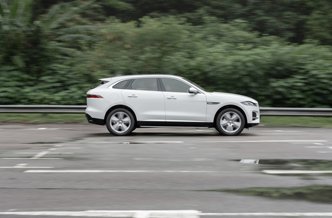 |
Apart from being stretched, the F-PACE is also more at home being pushed harder around corners. Plus, the steering is more precise, and even if it leans, such manoeuvres feel more natural here than in the XC60.
The F-PACE also has another card to play: refinement. Both its motor and ride quality are quieter than the XC60, in spite of its sportier disposition.
Final thoughts
The F-PACE does many things right. Its exterior design is more eye-catching, and its cockpit, complete with mood lighting and gorgeous infotainment, easily holds my attention. And though the backseat isn't as spacious as the XC60's, the F-Pace delights drivers with its smooth-revving motor and keener handling.
However, the F-PACE also commands a hefty $42,999 premium over the XC60 (figures are correct at time of writing), and that's too much to ask.
The XC60 is no slouch in terms of performance. It may not handle as well, but its off-the-line acceleration feels more eager, while the vault-like cabin makes one feel more secure.
Its cockpit does not have the F-PACE's pizzazz. But there's also a lot to be said about its intuitiveness. The seats are also more supportive, and having more space for passengers is more important than having a bigger boot.
There's no arguing that the F-PACE is a better drive. But when I consider the XC60's many capabilities and more attractive pricing, it's hard to argue against it being the better choice in this story.
Looking to compare more cars? Check out these other Group Tests
Lexus NX 350 F Sport takes on the Audi Q5 and BMW X3
Audi A3 Sedan goes up against the BMW 216i Gran Coupe
Mazda CX-5 meets the Volkswagen Tiguan
Nissan Qashqai faces off against the Skoda Karoq
Honda HR-V lines up alongside the Peugeot 3008
Mercedes-Benz CLA180 goes head-to-head with the BMW 216i Gran Coupe
Opel Mokka takes on the Renault Captur
Polestar 2 Long Range Single Motor goes up against the Tesla Model 3
Audi Q5 lines up alongside the Jaguar F-Pace
Volvo XC60 B5
Better ergonomics
More spacious backseat
Sprightlier off-the-line acceleration
Comfier seats
Jaguar F-PACE SE
More stylish interior
Smoother and more refined engine
Cushier ride quality
Cooler infotainment
Pitting the Volvo XC60 B5 against the Jaguar F-PACE SE is a very interesting experience, for these two models are diametrically opposed.
From their designs to their interiors to the way they drive, both models are the exact opposite of the other. The only thing they have in common is that they are premium mid-size SUVs.
Will Volvo's Scandinavian approach be the way to go? Or will Jaguar's British character prove to be even more enticing? Keep reading to find out!
Aesthetic contrasts
The XC60 (left) looks good, but the F-PACE's sportier profile is even more appealing, especially if the SUV is in a darker colour
The XC60 has even greater road presence than the F-PACE. With its chiselled 'square jaw', strong shoulder lines and angular rear end, it looks decidedly masculine. The F-PACE, on the other hand, gives off a swankier vibe with its slimmer head lights and taillights, narrower greenhouse and more steeply raked rear windscreen. Its L-shaped daytime running lights are a nice touch.
I also prefer the F-PACE's sloping roofline to the more upright roofline of the XC60. However, the lighter coloured paint on the F-PACE doesn't do it justice. In a darker hue such as Portofino Blue, the F-PACE's lines are more obvious.
Between the two, the XC60 is more attractive because it looks good from almost every angle. The F-PACE, on the other hand, is more appealing when viewed from its sides and rear three-quarter angles.
Inside stories
The XC60 and F-PACE also have different design philosophies when it comes to their interiors.
If it's user-friendliness you seek, then the XC60 is for you. Compared to pre-facelift model, the current one has a much simpler Android-powered infotainment system.
Said system is intuitive, with fewer menus to navigate and lesser options to tweak, so even first-time owners won't get lost here. Plus, the instrument panel now only has two main layouts: one with the map in the middle and another without.
The XC60's Android-powered infotainment (left) is more intuitive, but the F-PACE's Pivi Pro boasts much nicer graphics
Overall, the XC60's cockpit is neater and has fewer physical controls compared to the F-PACE. The climate functions, for instance, are within the infotainment and found at the bottom of the screen.The XC60 also has the edge in driver comfort, for its cockpit is roomier, while the supportive seats need little adjusting for you to find an ideal position.
The F-PACE, on the other hand, offers a more stylish space. Buyers can opt to have the dashboard and door panels trimmed with wood veneer, the gearshift lever's stitching is inspired by that of a cricket ball, and there's a selection of colours for the accent and background mood lighting.
The XC60 (left) offers ventilated and heated seats, while the F-PACE lets you pick the ambient lighting hues to match your mood
The curved 11.4-inch HD touchscreen for Jaguar's Pivi Pro system is also gorgeous. Though not as minimalist as the XC60's system, it's still easy to figure out. In fact, it takes just a swipe and a tap to turn off the stop-start function.I also prefer the F-PACE's air-con controls, with the dual-function knobs looking and feeling expensive. The same is true for the drive mode selector dial, which lets you push it down to 'lock' it and prevent accidental switching.
Practical matters
The XC60's backseat (left) is more spacious, but the F-PACE's bench is more convenient because it offers a pair of USB-C ports
If passenger space is a priority, then it's the XC60 that delivers. It's roomy both in the front and in the rear, so backseat passengers have more legroom and headroom to stretch out.The Volvo's bench is more comfortable than the F-PACE's, too. In addition, rear seat occupants also get two more climate zones, whereas in the F-PACE, it's just the standard pair of air vents.
Now, despite the F-PACE being the larger SUV and having a longer wheelbase (2,874mm vs 2,865mm), there's less space all around. The rear bench in particular, is more suitable for two instead of three, as the floor protrusion makes things more awkward for the middle occupant. The sloping roofline also reduces the available headroom. Sporty styling has its price.
The XC60's 483-litre boot (left) is dwarfed by the F-PACE's 793-litre capacity, which is also more flexible thanks to the 40:20:40 split-folding seats
However, the F-PACE's backseat is more useful, thanks to a pair of USB-C ports. Provided the passengers have the necessary cables, they'll be able to juice up their smartphones on the go.The F-PACE is even more useful when you need to haul groceries, sports equipment such as tennis racquets, or move house. Its 793-litre boot can take lots of bulky items, while the 40:20:40 split-folding rear seats enhances its flexibility.
Most folks will find the XC60's 483-litre boot to be more than adequate, though. With its rectangular space and 60:40 split-folding rear bench, you can still stow a full-size bicycle in here without any issues.
In addition, the relatively low loading height makes it easier for petite users to load/unload bulky items as well.
Driver appeal
The XC60's 2.0-litre (left) powerplant is capable but needs more refinement, while the F-PACE's engine remains smooth even as you redline it
On paper, the XC60 and F-PACE seem evenly matched. Both are powered by turbocharged 2.0-litre in-line four engines that produce 247bhp. The F-PACE's motor has a slight edge, though, for it produces 365Nm of torque versus the XC60's 350Nm of torque.But it's the XC60's powerplant that is more advanced, thanks to the 48-volt mild hybrid system. Because of this, the stop-start function here is much smoother than in the F-PACE.
The mild hybrid system also helps the XC60 average up to 14.5km/L, which is better than the F-PACE's stated average of 12.8km/L.
Unlike the XC60 (left), the F-Pace offers several driving modes and a manual override function, accessed using the paddle shifters
Paired to an eight-speed automatic gearbox, the XC60 surprisingly feels sprightlier than its century sprint time of 7.0 seconds might suggest. This is also due to the fact that it's front-wheel drive, while the F-PACE has all-wheel drive.Nail the accelerator pedal from a standstill and the XC60's front tyres will even chirp and squeal in protest as they attempt to deal with the torque suddenly being fed to the front axle.
But press on and you'll find that the XC60 is less willing to be driven hard. It may feel solid and tank-like on the go, but its motor could use more refinement.
The XC60 (left) feels more eager when taking off from a standstill, but the F-PACE feels nimbler and responds well to keener drivers
The F-PACE can please keener drivers. The engine thrives on revs, and at full tilt, the SUV can finish the zero to 100km/h sprint in 6.6 seconds.Apart from being stretched, the F-PACE is also more at home being pushed harder around corners. Plus, the steering is more precise, and even if it leans, such manoeuvres feel more natural here than in the XC60.
The F-PACE also has another card to play: refinement. Both its motor and ride quality are quieter than the XC60, in spite of its sportier disposition.
Final thoughts
The F-PACE does many things right. Its exterior design is more eye-catching, and its cockpit, complete with mood lighting and gorgeous infotainment, easily holds my attention. And though the backseat isn't as spacious as the XC60's, the F-Pace delights drivers with its smooth-revving motor and keener handling.
However, the F-PACE also commands a hefty $42,999 premium over the XC60 (figures are correct at time of writing), and that's too much to ask.
The XC60 is no slouch in terms of performance. It may not handle as well, but its off-the-line acceleration feels more eager, while the vault-like cabin makes one feel more secure.
Its cockpit does not have the F-PACE's pizzazz. But there's also a lot to be said about its intuitiveness. The seats are also more supportive, and having more space for passengers is more important than having a bigger boot.
There's no arguing that the F-PACE is a better drive. But when I consider the XC60's many capabilities and more attractive pricing, it's hard to argue against it being the better choice in this story.
Looking to compare more cars? Check out these other Group Tests
Lexus NX 350 F Sport takes on the Audi Q5 and BMW X3
Audi A3 Sedan goes up against the BMW 216i Gran Coupe
Mazda CX-5 meets the Volkswagen Tiguan
Nissan Qashqai faces off against the Skoda Karoq
Honda HR-V lines up alongside the Peugeot 3008
Mercedes-Benz CLA180 goes head-to-head with the BMW 216i Gran Coupe
Opel Mokka takes on the Renault Captur
Polestar 2 Long Range Single Motor goes up against the Tesla Model 3
Audi Q5 lines up alongside the Jaguar F-Pace
Car Information
Volvo XC60 Mild Hybrid
CAT B|Petrol-Electric|14.5km/L
Horsepower
-
Torque
350 Nm
Acceleration
7sec (0-100km /hr)
Jaguar F-PACE 2.0 SE (A)
CAT B|Petrol|12.8km/L
Horsepower
184kW (247 bhp)
Torque
365 Nm
Acceleration
6.6sec (0-100km /hr)
This model is no longer being sold by local distributor
All Used Jaguar F-PACEThank You For Your Subscription.























































